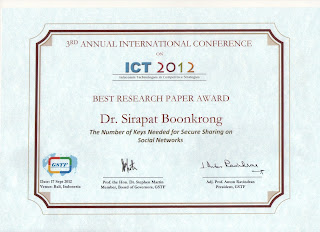Yes ... This is my Ph.D. thesis title. I am not trying brag or anything, but I just think that my thesis is worth mentioning here. Even though it has been published since 2006, I don't think that it has been publicised enough.
The problem with mobile ad hoc networks at the time of doing the thesis was that there was literally no suitable security protocols for authentication and handoff processes. Therefore, I felt that there was a need to design one.
Below is the abstract of the thesis:
"A
mobile ad hoc network (MANET) is a relatively new networking
paradigm. Mobile ad hoc networks are more exposed to security threats
due to the lack of physical security. That is why the introduction of
security protocols, such as authentication and secure handoff
protocols, is necessary. This is especially the case for private
local mobile ad hoc networks. This thesis is a progress towards
producing a secure and efficient authentication protocol as well as a
secure and efficient handoff protocol for private local mobile ad hoc
networks.
Our
investigations show that there are performance and security problems
with the existing authentication and keying mechanisms. We design and
develop an authentication protocol, which mitigates those problems,
using a combination of well-known cryptographic tools of RSA and
Diffie-Hellman. The ns2 simulations demonstrate that
authentication and key establishment between two mobile nodes can be
accomplished in just four messages, and in approximately ten
milliseconds. The protocol has been analysed and proved secure
according to the BCK and CK approaches, and the GNY logic.
The
pre-handoff protocol has been designed so that mobile nodes will hold
the necessary information essential for achieving fast handoffs. This
stage is an extension to the normal exchange of Hello messages
among mobile nodes, which occurs whenever there is a change in
network topology. The multipoint relay (MPR) algorithm is also
integrated into the protocol to improve the efficiency.
One
feature of MANETs is the topological instability. Currently, no
handoff protocols for pure MANETs are available. We, therefore,
introduce an efficient and secure handoff protocol, which is suitable
for the movement of any mobile node within that domain, i.e.
micro-mobility. Our approach again uses the combination of RSA
and Diffie-Hellman protocols. We show that a handoff can be
accomplished in just five messages, and without relying upon any
third parties. The ns2 simulations demonstrate that, on average, it
takes less than twenty milliseconds to complete the handoff process,
which is more than twice as fast as the time recommended by the ITU.
The protocol has also been proved secure and correct according to the
BCK and CK formal models, and the GNY analysis."
If interested you can see the full version of my thesis here.
For your information, even though the thesis was done at the University of Bath, it was awarded a 2010 national thesis prize from the National Research Council of Thailand (NRCT). I received the prize from Mr.Abhisit Vejjajiva, who was the Prime Minister of Thailand at the time and is the guy on the left of the picture below.



